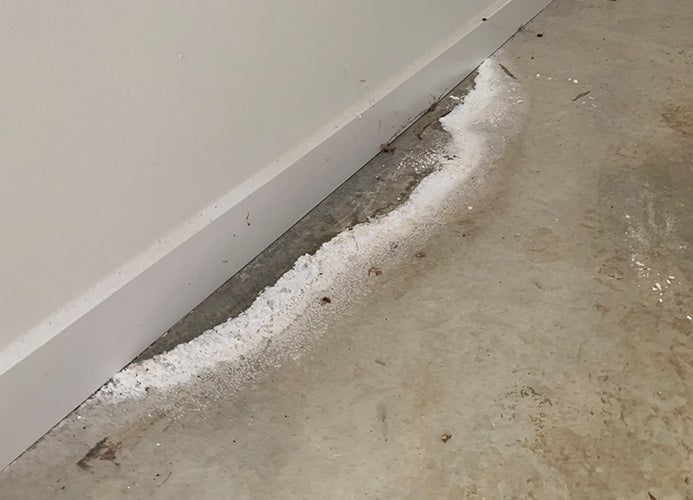-
Dealing with Concrete Slab Edge Dampness in Australia: Causes, Effects, and Effective Solutions.


INTRODUCTION:
Concrete slab edge dampness is a prevalent issue faced by homeowners and builders in Australia. It can cause various problems such as mould and mildew growth, damage to flooring and finishes, decreased energy efficiency, and even structural damage. In this article, we will delve into the causes, effects, and effective solutions for concrete slab edge dampness in Australia, providing valuable insights for those seeking to tackle this issue…
CAUSES OF CONCRETE SLAB EDGE DAMPNESS IN AUSTRALIA:
There are several causes of concrete slab edge dampness in Australia. Poor waterproofing during the construction process is a common culprit. If moisture barriers, sealants, or coatings are not properly applied, water can penetrate the concrete slab’s edge, leading to dampness. Additionally, improper site preparation, such as inadequate drainage or poor grading, can also contribute to concrete slab edge dampness. Groundwater or rainwater seeping into the soil can accumulate and find its way into the slab’s edge, causing dampness issues.
EFFECTS OF CONCRETE SLAB EDGE DAMPNESS:
Concrete slab edge dampness can have detrimental effects on the integrity and functionality of a building. Efflorescence or ‘salting’ to slabs edges as pictured above is one of the most common signs of slab edge dampness. Mould and mildew growth are also common consequences of dampness, which can lead to possible health hazards. Dampness can also cause damage to flooring and finishes, leading to costly repairs or replacements. Additionally, over an extended time, dampness can cause structural damage to the concrete slab, compromising its longevity and strength.
SOLUTIONS FOR CONCRETE SLAB EDGE DAMPNESS:
Rectification works relating to buildings with slab edge dampness problems are typically undertaken on a trial-and-error (iterative) basis with attempts to rectify obvious poor site features first, followed by more comprehensive and costly rectification techniques. Typical rectification methods are aimed at water-proofing the edge of the slab and reducing the moisture content of the surrounding soils. Proper site preparation, such as ensuring proper grading and drainage, can also help prevent water from accumulating around the slab edge. Additionally, implementing effective moisture management strategies, such as installing gutters, downpipes, and proper landscaping, can help divert water away from the slab edge. Ongoing monitoring must then be undertaken to verify the results.
Regular inspections and maintenance of the building envelope can also help identify and address any potential dampness issues early on. This includes checking for signs of water intrusion, such as damp spots, mould or mildew growth, and musty odours, and taking prompt action to rectify any issues.
CONCLUSION:
Concrete slab edge dampness is a common issue in Australia that can have detrimental effects on buildings if not addressed properly. By understanding the causes, effects, and solutions for concrete slab edge dampness, homeowners and builders can take effective measures to prevent and mitigate this problem. Proper waterproofing, site preparation, moisture management, and regular inspections and maintenance are key to tackling concrete slab edge dampness and ensuring a dry and healthy living environment. Our skilled team can help prepare a rectification strategy for your property.
We recommend you contact Booth Engineers and Associates or another suitably qualified professional engineer with experience in assessing and rectifying damaged structures to evaluate your property today.
Talk to an Engineer Today
For more information, or to get a quote , please contact our team.
RECENT POSTS
-
CASE STUDY – PROJECT ASSISTANCE FOR RECTIFICATIONS TO AN EXISTING SUSPENDED CONCRETE WALKWAY AND ADDRESSING SUBSIDENCE TO THE ADJOINING BUILDING – PADDINGTON, BRISBANE:
-
CASE STUDY: RECTIFICATION WORKS TO RESOLVE POOR DRAINAGE AND WATER POOLING - NORTH LAKES
-
Exploring the Tools Behind Booth Engineers & Associates' Forensic Inspections
